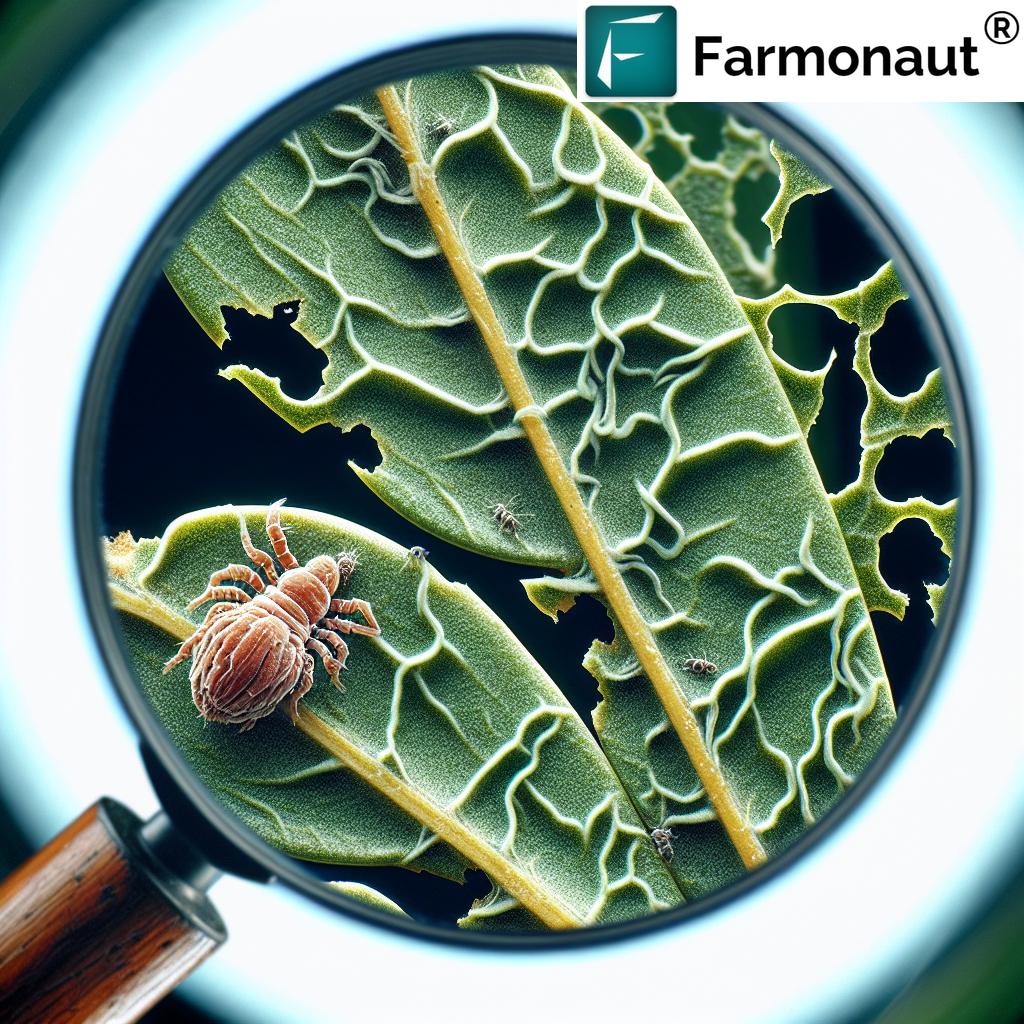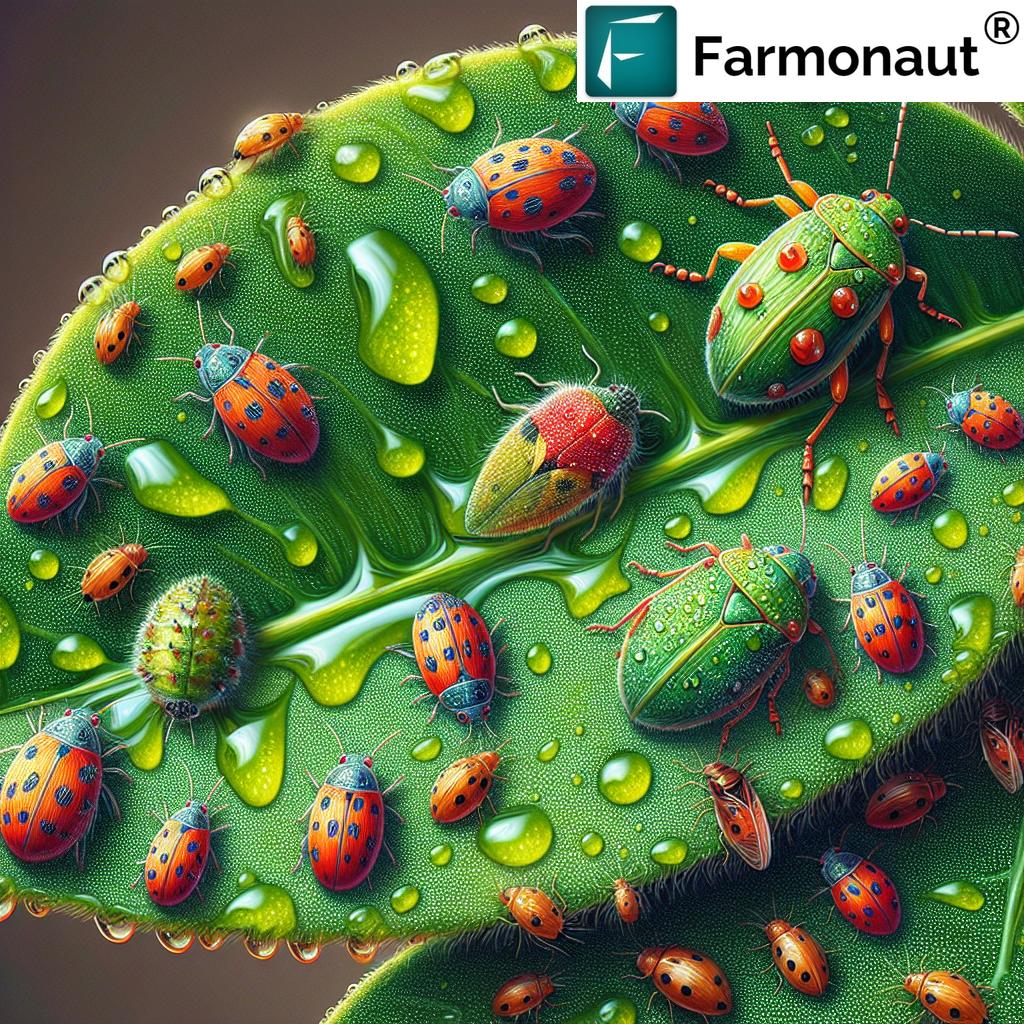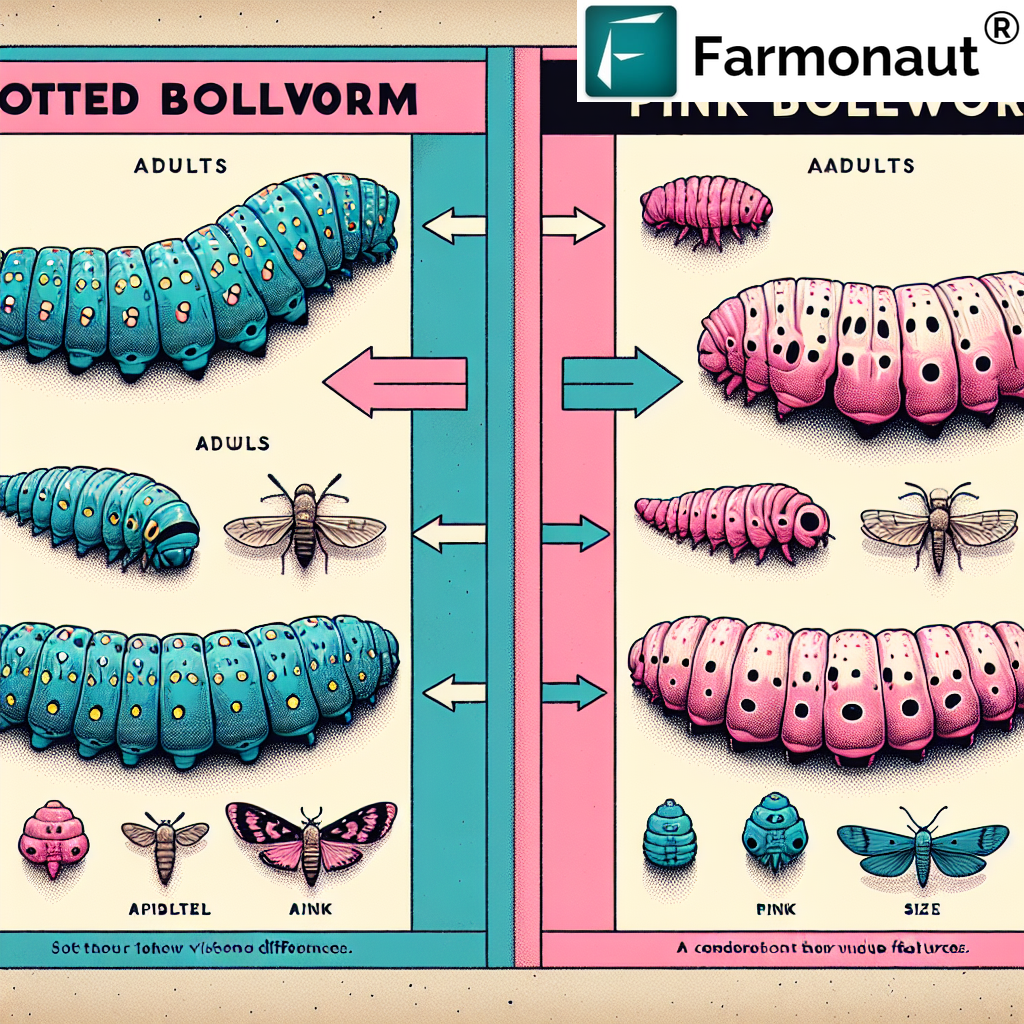Organic Treatment for Grape Erineum Mites: Monitoring and Managing Eriophyes vitis on Vine Leaves

In the world of viticulture, grape growers face numerous challenges in maintaining healthy and productive vines. One of the most persistent and troublesome pests that plague grapevines is the grape erineum mite, scientifically known as Eriophyes vitis. These microscopic arachnids can cause significant damage to grape leaves, affecting both the aesthetic appeal and overall health of the vines. In this comprehensive guide, we’ll explore the nature of these pests, their impact on grape production, and most importantly, how to effectively monitor and manage them using organic treatments.
Understanding Grape Erineum Mites (Eriophyes vitis)
Grape erineum mites, belonging to the species Eriophyes vitis, are tiny arthropods that specifically target grapevines. These mites are so small that they’re invisible to the naked eye, measuring only about 0.2 mm in length. Despite their minuscule size, their impact on grape plants can be substantial.
Lifecycle and Behavior
- Erineum mites overwinter in the bud scales of grapevines.
- As spring arrives and new growth emerges, the mites become active and begin feeding on young leaves.
- They reproduce rapidly, with females laying eggs within the galls they create on the leaves.
- Multiple generations can occur throughout the growing season, leading to exponential population growth if left unchecked.
Symptoms and Damage
The most distinctive sign of erineum mite infestation is the formation of galls on grape leaves. These galls, also known as erineum or blister galls, appear as raised, fuzzy patches on the underside of leaves. The corresponding upper surface of the leaf often shows a blister-like bulge.
- Erineum galls: Fuzzy, felt-like growths on the undersides of leaves, usually greenish-white at first, later turning reddish-brown.
- Leaf blisters: Raised areas on the upper leaf surface corresponding to the galls beneath.
- Leaf distortion: Severe infestations can cause leaves to curl, wrinkle, or become misshapen.
- Reduced photosynthesis: Heavily affected leaves may have diminished capacity for photosynthesis, impacting overall vine health.

The Impact of Erineum Mites on Grape Production
While erineum mites primarily affect the leaves of grapevines, their presence can have far-reaching consequences for grape production:
- Reduced vine vigor: Heavily infested vines may experience stunted growth and reduced overall health.
- Decreased fruit quality: Although mites don’t directly attack the fruit, the stress on the vine can lead to lower-quality grapes.
- Increased susceptibility to other pests and diseases: Weakened vines are more vulnerable to secondary infections and infestations.
- Aesthetic concerns: For table grape producers, the visual impact of galled leaves can reduce marketability.
Monitoring for Erineum Mite Infestations
Early detection is crucial for effective management of erineum mites. Regular monitoring of grapevines throughout the growing season can help identify infestations before they become severe. Here are some key strategies for monitoring:
Visual Inspection
- Examine the undersides of leaves, particularly young growth, for signs of galls.
- Look for blistering or unusual bulges on the upper leaf surfaces.
- Check for leaf distortion or curling, which may indicate a severe infestation.
Magnification
- Use a hand lens or magnifying glass to inspect suspected galls more closely.
- Look for the tiny, worm-like mites within the fuzzy growths of the galls.
Timing
- Begin monitoring in early spring as new growth emerges.
- Continue regular inspections throughout the growing season, as mite populations can increase rapidly under favorable conditions.
Record Keeping
- Maintain detailed records of observations, including dates, locations of infested plants, and severity of symptoms.
- This information can be valuable for tracking the progression of infestations and evaluating the effectiveness of management strategies.
Advanced Monitoring with Farmonaut’s Satellite System
While traditional monitoring methods are essential, modern technology offers even more sophisticated tools for detecting and managing erineum mite infestations. Farmonaut’s satellite-based monitoring system provides grape growers with an unprecedented level of insight into their vineyards’ health.
Benefits of Satellite Monitoring for Erineum Mite Detection
- Early Detection: Satellite imagery can detect subtle changes in plant health before visible symptoms appear, allowing for proactive management.
- Comprehensive Coverage: Entire vineyards can be monitored simultaneously, regardless of size or terrain.
- Time and Labor Efficiency: Reduces the need for extensive manual scouting, saving time and labor costs.
- Data-Driven Decision Making: Provides quantifiable data on plant health, enabling more informed management decisions.
To better understand the advantages of using Farmonaut’s satellite system for monitoring erineum mites, let’s compare it to traditional monitoring methods:
| Feature | Traditional Monitoring Methods | Farmonaut Satellite System |
|---|---|---|
| Early Detection | Limited to visible symptoms | Can detect stress before visible symptoms appear |
| Coverage Area | Time-consuming for large vineyards | Entire vineyard monitored simultaneously |
| Labor Requirements | High – requires regular manual scouting | Low – automated monitoring with minimal manual input |
| Cost-Effectiveness | Variable, depends on labor costs | High, especially for large-scale operations |
| Data Analysis | Manual, potentially subjective | Automated, data-driven insights |
| Frequency of Monitoring | Limited by available time and resources | Regular updates based on satellite passes |
By integrating Farmonaut’s satellite monitoring with traditional scouting methods, grape growers can create a comprehensive and highly effective system for managing erineum mite infestations. To learn more about how Farmonaut can enhance your vineyard management, visit Farmonaut’s Application.
Organic Treatment Strategies for Erineum Mites
For organic grape growers, managing erineum mites presents a unique challenge. Conventional chemical insecticides are not an option, and even if they were, their effectiveness against these tiny mites is limited. Fortunately, there are several organic approaches that can help control erineum mite populations and mitigate their impact on grapevines.
1. Cultural Controls
- Pruning and Leaf Removal: Selectively removing heavily infested leaves can help reduce mite populations. However, this should be done judiciously to avoid over-stressing the vine.
- Improving Air Circulation: Proper pruning and trellising to enhance air flow through the canopy can create less favorable conditions for mites.
- Maintaining Vine Health: Well-nourished, stress-free vines are more resilient to mite damage. Ensure proper irrigation, nutrition, and soil health.
2. Biological Controls
Encouraging natural predators of erineum mites can help keep populations in check:
- Predatory Mites: Species like Typhlodromus pyri and Amblyseius andersoni feed on erineum mites.
- Lacewings and Ladybugs: While not specific to erineum mites, these general predators can contribute to overall pest control in the vineyard.
- Habitat Management: Creating diverse plantings around the vineyard can provide habitat for beneficial insects.
3. Organic Pesticides
When cultural and biological controls are insufficient, organic pesticides can be used as part of an integrated pest management strategy:
- Sulfur: Micronized sulfur dust or wettable sulfur can be effective against erineum mites. However, it should be used carefully as it can harm beneficial insects.
- Neem Oil: This natural insecticide can disrupt mite feeding and reproduction. It’s most effective when applied early in the infestation.
- Horticultural Oils: Lightweight oils can smother mites and their eggs. They’re best applied when mites are active but before populations explode.
4. Plant-Based Repellents
Some plant extracts have shown promise in repelling or deterring erineum mites:
- Garlic Extract: Sprays made from garlic can have a repellent effect on mites.
- Essential Oils: Certain essential oils, such as rosemary or eucalyptus, may have repellent properties when properly formulated and applied.
Implementing an Organic Management Plan
Effective control of erineum mites in organic grape production requires a holistic, integrated approach. Here’s a step-by-step guide to developing and implementing an organic management plan:
1. Assessment and Monitoring
- Conduct regular visual inspections of vines, focusing on new growth and undersides of leaves.
- Utilize Farmonaut’s satellite monitoring system for early detection of plant stress that may indicate mite infestations. Learn more about our API.
- Keep detailed records of observations, treatments, and their effectiveness.
2. Prevention
- Implement cultural practices that promote vine health and create unfavorable conditions for mites.
- Encourage biodiversity in and around the vineyard to support natural predators.
- Practice good sanitation, including proper disposal of pruned material that may harbor overwintering mites.
3. Early Intervention
- At the first sign of infestation, begin with the least invasive control methods.
- Selective pruning of affected leaves, if infestation is localized.
- Application of horticultural oils or neem oil to smother mites and disrupt their life cycle.
4. Escalating Treatment
If early interventions are insufficient:
- Consider applications of micronized sulfur, following organic certification guidelines.
- Increase frequency of monitoring to assess treatment effectiveness.
- Adjust cultural practices as needed to further stress mite populations.
5. Ongoing Management
- Continue regular monitoring throughout the growing season.
- Rotate control methods to prevent resistance development.
- Adjust strategies based on observed effectiveness and changing conditions.
Leveraging Technology for Enhanced Pest Management
While traditional organic methods form the foundation of erineum mite control, integrating modern technology can significantly enhance the effectiveness of your management strategy. Farmonaut’s suite of tools offers organic grape growers powerful resources for monitoring and managing their vineyards:
Satellite-Based Crop Health Monitoring
Our advanced satellite imagery provides regular updates on vine health, allowing for early detection of stress that may indicate mite infestations. This technology enables growers to:
- Identify problem areas before visible symptoms appear
- Direct scouting efforts more efficiently
- Track the effectiveness of treatments over time
To experience the benefits of satellite monitoring for your vineyard, download our mobile app:
Jeevn AI Advisory System
Our AI-powered advisory system analyzes satellite data, weather patterns, and historical information to provide personalized recommendations for managing erineum mites and other vineyard challenges. This system can help organic growers:
- Optimize timing of organic treatments
- Predict potential outbreaks based on environmental conditions
- Tailor management strategies to specific vineyard sections
Weather Forecasting and Alerts
Accurate weather forecasting is crucial for effective mite management. Our system provides:
- Detailed, localized weather predictions
- Alerts for conditions favorable to mite proliferation
- Guidance on optimal timing for organic treatments
For developers interested in integrating our weather data into their own systems, check out our Weather API documentation.
Case Studies: Successful Organic Management of Erineum Mites
While we don’t include specific case studies or success stories, it’s worth noting that many organic grape growers have successfully managed erineum mite infestations using a combination of traditional organic methods and modern technology. The key to success often lies in:
- Early detection through regular monitoring and advanced technologies
- Prompt implementation of integrated pest management strategies
- Consistent application of cultural and biological controls
- Judicious use of organic pesticides when necessary
- Continuous learning and adaptation of management practices
Challenges and Future Directions in Organic Erineum Mite Management
As we continue to refine organic methods for controlling erineum mites, several challenges and opportunities emerge:
Challenges:
- Climate Change: Shifting weather patterns may alter mite behavior and life cycles, requiring adaptive management strategies.
- Resistance Development: Even organic pesticides can lead to resistance if overused, necessitating ongoing research into new control methods.
- Balancing Mite Control with Overall Ecosystem Health: Ensuring that management practices don’t negatively impact beneficial organisms in the vineyard ecosystem.
Future Directions:
- Advanced Biocontrol Agents: Research into more specific and effective natural predators of erineum mites.
- Precision Application Technologies: Development of tools for more targeted application of organic treatments, reducing overall pesticide use.
- Resistant Grape Varieties: Breeding programs focused on developing grape varieties with natural resistance to erineum mites.
- Integration of AI and Machine Learning: Enhancing predictive models for mite outbreaks and treatment efficacy.
Conclusion
Managing grape erineum mites in organic vineyards presents unique challenges, but with a comprehensive approach that combines traditional wisdom with modern technology, it’s possible to effectively control these pests while maintaining the integrity of organic production. By leveraging tools like Farmonaut’s satellite monitoring and AI advisory systems, organic grape growers can stay ahead of potential infestations, optimize their management strategies, and produce high-quality, healthy grapes.
Remember, successful organic pest management is an ongoing process of observation, adaptation, and integration of various control methods. By staying informed about the latest research and technologies, and by carefully monitoring your vineyard’s health, you can create a resilient, productive organic grape-growing operation that effectively manages erineum mites and other challenges.
FAQs about Organic Management of Grape Erineum Mites
- Q: Can erineum mites completely destroy a grape crop?
A: While severe infestations can significantly impact vine health and grape quality, complete crop destruction is rare. Proper management can usually mitigate the damage. - Q: How often should I monitor my vineyard for erineum mites?
A: Regular monitoring is crucial, especially during spring and early summer. Weekly inspections are recommended, with more frequent checks if an infestation is detected. - Q: Are there any grape varieties resistant to erineum mites?
A: While no grape varieties are completely immune, some show greater resistance than others. Research is ongoing to develop more resistant cultivars. - Q: Can I use predatory mites as a standalone control method?
A: While predatory mites can be effective, they’re best used as part of an integrated pest management strategy that includes other control methods. - Q: How does Farmonaut’s satellite monitoring detect mite infestations?
A: Satellite imagery can detect changes in plant health and stress levels that may indicate mite infestations, often before visible symptoms appear. - Q: Is sulfur treatment effective against erineum mites?
A: Sulfur can be effective, but it should be used carefully as it can harm beneficial insects. It’s best used as part of a broader management strategy. - Q: How long does it take to see results from organic treatments?
A: Results can vary depending on the treatment and severity of infestation. Some effects may be seen within days, but full control often takes several weeks of consistent management. - Q: Can erineum mites spread to other plants in my garden?
A: Grape erineum mites (Eriophyes vitis) are specific to grapevines and generally don’t affect other plant species. - Q: How can I encourage natural predators of erineum mites in my vineyard?
A: Promote biodiversity by maintaining diverse plantings around the vineyard, avoiding broad-spectrum pesticides, and providing habitats for beneficial insects. - Q: Is it possible to completely eradicate erineum mites from a vineyard?
A: Complete eradication is challenging and often unrealistic. The goal should be to manage populations below economically damaging levels through integrated pest management strategies.
For more information on how Farmonaut can help you manage erineum mites and other vineyard challenges, explore our subscription options:













